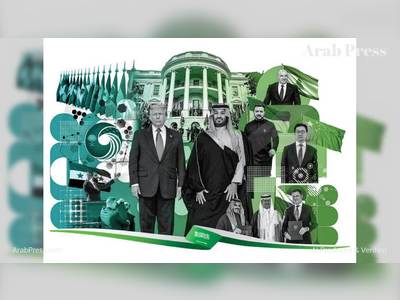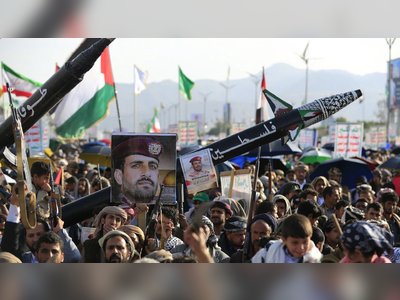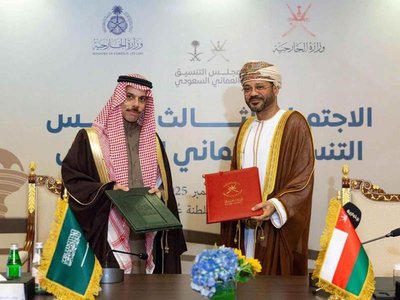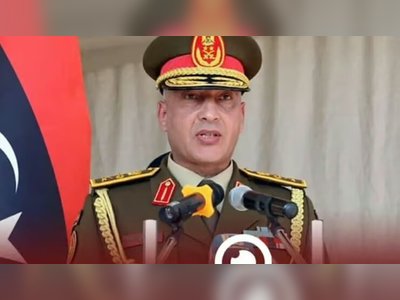Why China’s Belt and Road Initiative offers world of business investment opportunities
China has experienced a rapid transformation since it began to open up and reform its economy in 1978.
Its average gross domestic product (GDP) growth – based on resource-intensive manufacturing, exports and low labour costs – has averaged nearly 10 per cent a year and it is now the world’s second largest economy.
China, which reported a GDP of US$14.1 trillion last year – the second highest in the world – has one of the highest projected growth rates among trillion-dollar economies, according to Nasdaq, the American stock exchange.
As an emerging global superpower, its economic strength and influence presents huge opportunities for both multinational corporations and start-ups as the rising middle-class fuels consumption demand.
However, China’s influence extends far beyond its national borders. In recent years it has been leading efforts to promote greater regional development.
In 2013, Chinese President Xi Jinping proposed its Belt and Road Initiative (BRI) – an ambitious collection of development and infrastructure plans stretching from East Asia to Europe – which seeks to deepen investment and trade partnerships between China and nations throughout Asia, Africa and Europe.
The Chinese government says Xi’s vision – inspired by the ancient Silk Road trading route linking Xian, in central China, with the Mediterranean, which was established 2,000 years ago, during the Han dynasty (206BC-AD24) – includes creating a vast network of railways, power pipelines and major motorways, which will enhance regional connectivity and economic cooperation.
China is providing the bulk of the funding for the infrastructure projects, which will further increase its political and economic influence across these continents.
Global development strategy
The BRI’s name is derived from its overland and maritime networks – the “Belt”, or Silk Road Economic Belt, which roughly travels along the original Silk Road route, and the “Road”, which encompasses shipping lanes known as the 21st Century Maritime Silk Road.
The land and sea routes, stretching over more than 100 nations in Asia, Africa, and Europe, aims to create an economic area that features improved connectivity, free trade agreements and a common legal structure.
Deloitte, the global accounting firm, says the economic significance of the BRI is unprecedented, with two-thirds of the global population likely to benefit from the new networks, which will influence global economic development in the coming decades.
“I think the Belt and Road Initiative is an amazing project,” said Budi Jonathan Sudharta, CEO of Halodoc, an Indonesia healthtech mobile app, which connects patients with doctors, insurance, laboratories and pharmacies.
“It [will be] very interesting for me … if we can expand the opportunity and the potential of the Belt and Road Initiative to connect four billion people.”
One of the key business opportunities presented by BRI is the widespread construction of infrastructure. The multinational investment bank, HSBC, said the total cost of infrastructure investment could be as much as US$5 trillion.
Nearly 3,000 projects under way
Research by Refinitiv, a global financial market information provider, shows that up to last July nearly 3,000 BRI-related projects were already under way across the three continents, which involve more than 2,600 companies from different sectors.
The BRI’s projects are mainly related to infrastructure development in the transport, energy, mining, information technology and communications sectors, but also cover areas such as tourism, industrial parks, Special Economic Zones and urban development.
An estimated US$54 billion worth of infrastructure projects are planned along the China-Pakistan Economic Corridor – the biggest project under the initiative – which features a now partly operational highway from China’s Xinjiang to Pakistan’s Gwadar Port and will eventually lead to seaports in both Gwadar and Karachi linked with northern Pakistan, western China and Central Asia.
Other notable projects include the US$6 billion high-speed rail link in Indonesia, connecting the nation’s capital, Jakarta, in East Java, to the city of Bandung in West Java, a US$1.5 billion Chinese-funded intercity railway in Kenya, construction of Sri Lanka’s US$1.4 billion Colombo Port City – involving reclamation covering an area measuring 269 hectares (665 acres) – and a natural gas pipeline system, which runs between China and Central Asia.
However, the massive costs involved in these ambitious development plans have led to significant funding shortfalls, the global accounting firm, PwC, reported – creating a project bottleneck that has hindered the BRI’s development.
Multilateral financial institutions, including the Asian Infrastructure Investment Bank and the New Development Bank – formed by the BRICS nations, Brazil, Russia, India, China and South Africa – have been set up to incorporate private capital to diversify the source of funds and provide new investment opportunities.
Zhou Chanyan, managing director of Morgan Stanley in Hong Kong, said that besides investing in new infrastructure projects, there were also new opportunities for companies to expand their businesses in other BRI countries.
“For Belt and Road, I don’t just invest in China, I also invest in Southeast Asian countries,” she said, adding that she was working closely with other entrepreneurs to identify new growth areas throughout the region.
One of these expanding business markets is in technology. China, which is regarded by some analysts as one of the world’s leaders in technology, has been investing heavily in fields such as artificial intelligence and robotics.
The BRI will see China’s tech companies working with other industry players to expand digital infrastructure abroad, the US think tank, Council on Foreign Relations, reported.
For the start-up Fave, a leading mobile online-to-offline merchant platform in Southeast Asia, the BRI could offer new opportunities for advancing its technology, especially in e-commerce and cashless payments.
“I think the Southeast Asia region is probably a couple of years behind in terms of its development,” Joel Noah, the company’s founder, said.
“So I’m looking forward to contributing in whatever way I can to bridge the gap within Southeast Asia.”
Businesses to seize BRI’s opportunities
As these new opportunities emerge, businesses will need to formulate their strategic goals to understand how they can benefit from BRI’s development.
Since China has been leading the development strategy, entrepreneurs will also need to have a sound knowledge of Chinese business practices and a good network of contacts in the country.
Tsinghua University, one of China’s oldest and most esteemed universities, is well positioned to help business professionals achieve these goals.
Founded in Beijing in 1911, it is the alma mater of not only Xi, but also other former Chinese leaders such as Hu Jintao and Zhu Rongji.
According to the latest QS World University Rankings, Tsinghua University, which is mainland China’s top-placed university, is rated 16th best in the world.
Tsinghua University’s BRI EMBA Program, which is aimed at international business leaders and runs for between two and three years, is offered by its PBC School of Finance – a joint venture with the People’s Bank of China – which has been a leading centre of financial research in China since 2012.
The BRI EMBA Program includes lectures, forums and company visits that feature the latest insights into China’s role in the BRI, such as its newest investment projects, policy areas and regional cooperation developments.
Seizing on a wealth of resources, the course aims to help students from China and Southeast Asia acquire an in-depth understanding of the regional economies and the BRI.
Over the years it has attracted accomplished students ranging from start-up entrepreneurs to executives of multinational businesses.
The course has taught them how to work effectively with capital markets and financial institutions, engage in business deals with Chinese entrepreneurs and to apply advanced financial theories when exploring new business opportunities.
One of the students on the course, Rachmat Harsono, is president of the Indonesian industrial gas company, PT Aneka Gas Industri. Harsono said he enrolled on the course to learn more about accounting to help boost his business.
“Tsinghua University is one of the most elite universities in China and it will help me understand financing skills better,” he said. “Hopefully I can gain some [useful] perspectives about monetary and fiscal policies in China.”
Robin Lo, CEO of J&T Express, a major logistics and express delivery company operating in Southeast Asia, agreed that understanding finance would be crucial while he expanded his business through the BRI.
“Finance is, of course, the main skill we should master before we really grow our business,” he said.
“Without being able to control it, the growth of the business will become worthless.”
While learning new business skills may be important, attending classes alongside business leaders from different BRI regions also will offer valuable networking opportunities.
“This class consists of so many people [from] around the world,” Lo said. “In the logistics business, it’s important to expand our networking.”
Sudharta, who supports this view, said: “Network[ing] is a very important part of why I came here. Taking an EMBA course with international businessmen is going to be an amazing experience.”



















Setting up manufacturing capacities,to cater to the local Pakistani market and exporting the surplus,is not viable,as Pakistan does not have economies of scale (even to realise the geometric impact,of lower labour costs).Planning capacities on that model,leads to the DISASTER of the Indian NPAs,of 350-400 Billion USD,with exports dead,and the inability of Indians,to compete,with the PRC.
Export of Water - is export of animal proteins,exotic fruits and vegetables and agri to the GCC,EU and other parts of the world.Water from the skies or the earth,by rarefaction or condensation or precipitation,in the form of hail,rain or snow,is purely a function of geography,in a time span of a few decades.Over a period of 3-4000 years,some disasters can occur,like the disappearance of Saraswati (in Pakistan) or the diversion of rivers etc.
Thus,water captures the fertility and agro-ecoonomic opportunities and variety of Pakistani soil,and also,the geo-strategic location of Pakistan (w.r.t access to GCC,Ports,Cheapest Point of Purchase for UN/FAO/WHO procurements for Afghanistan etc.)
In Pakistan,Water is a Perpetual Resource,UNLIKE in India.In addition,many nations in the EU allow a COO certificate linked to a Geography,in that exporting nation, to give ADDITIONAL DUTY/SUBSIDY AND QUOTA BENEFITS. These are agriculture and agri-derivatives,like wine.Pakistan is the prime candidate, for the same,for exotic fruits etc., which have valuable and critical,downstream applications,in the EU.
Export of Earth - is export of minerals,which ALSO,includes industries like Cement (which is export of lime,limestone and coal).Once the Coal Fields of Pakistan,are tapped,then it would include sale of power,as the cheapest way to transport power,is at the speed of light,via a grid - especially,when the Grid is set up by other nations.
Pakistani Mineral Resources are almost perpetual,and in areas with very low density of population and ample water.Thus the scope for TOLERATING pollution is higher - and so,like in Nuke Power - if some latitude is granted w.r.t pollution,wastes,effluents,safety and environment - mining costs can crash exponentially.For a Perpetual reserve,with an exchange rate of Rs 160/USD,it is akin to burying US Dollars, 1000 meters in the earth,and starving on top of the earth.For a nation,with finite reserves (in the short term),there is an opportunity cost,of exports - in terms of the fact that,in 2023 (say),prices of several ores might be 2-5 times,current rates - and so,they can raise USD,from bankers,liening the mining reserves.
Export of Defense - In conjunction with the PRC and the PLA/PLN.PLAF,Pakistan can perfect the technique of customising and innovating Chinese Defense Technology,for their use,and exporting lower technologies or the excess capacities to Africa,Central Asia,LATAM,South America and the Middle East (excluding the quasi Nato nations).With Chines=se Financial Aid, extensive credits can be given.There are many nations in the world,which the PRC would NOT like to make defense exports to.
Export of Labour - Pakistan needs to be practical,to use low cost manufacturing technologies,which are labour intensive and require moderate power consumption,and some pollutive impact.Low Capital Costs,will lower the Operating and Financial Risk,and the skilled but CHEAPER labour cost,can be exported OUT.There would be several such technologies,several products and several markets.
LDC - Lastly,Pakistan has to maximise the LDC benefits,using Chinese Capital and SEZs - with an appropriate mix of Chinese Labour and Domestic Input Costs,in the SEZ units, so that the COO is Pakistan,and the LDC benefits are availed of.
SEZs - The SEZ policy of Pakistan has to be synthesised with the LDC gains,to ensure that the costs to the SEZ,are the lowest among all LDCs in the world.However,the Costs are not to be evaluated,as the Nominal Costs.So the land lease and other charges,payable by the SEZ to the Pakistani State, might not be the lowest - but on a NET differential Mode,w.r.t the Reduction in Logistics costs,to the Pakistani SEZ,it should be the LOWEST in the world. Once that is done,then as a thumb rule, to keep the laws simple, FREE EXIM needs to allowed and all Inputs (including Power etc.) should be sourcable,w/o caveats.So a SEZ should be able to set up a IPP/CPP/RPP,anywhere in Pakistan,with any fuel,with nil duty and taxes and the lowest wheeling and banking charges.dindooohindoo
Corporate Tax holidays should start AT THE CHOICE of the Investor,FROM THE YEAR after which the Brought forward losses,of the SEZ are exhausted.And the Tax holiday should be co-terminus,with that of the longest holiday,by any LDC.The period of limitation,for the Choice of initiating the holiday period,should be upto 5 years,from commercial operations.
Basically,even if Pakistan waives the Wheeling charges etc.,it does not matter,as the aim is to bring in the ANCHOR and other Investors in the SEZ. Thereafter,the principles of Self Preservation by the SEZs,and its units,will ensure that,the State will find ingenious ways to earn revenue - provided that,1st the ANCHOR comes in,and then, that the SEZ and the SEZ units,make money !